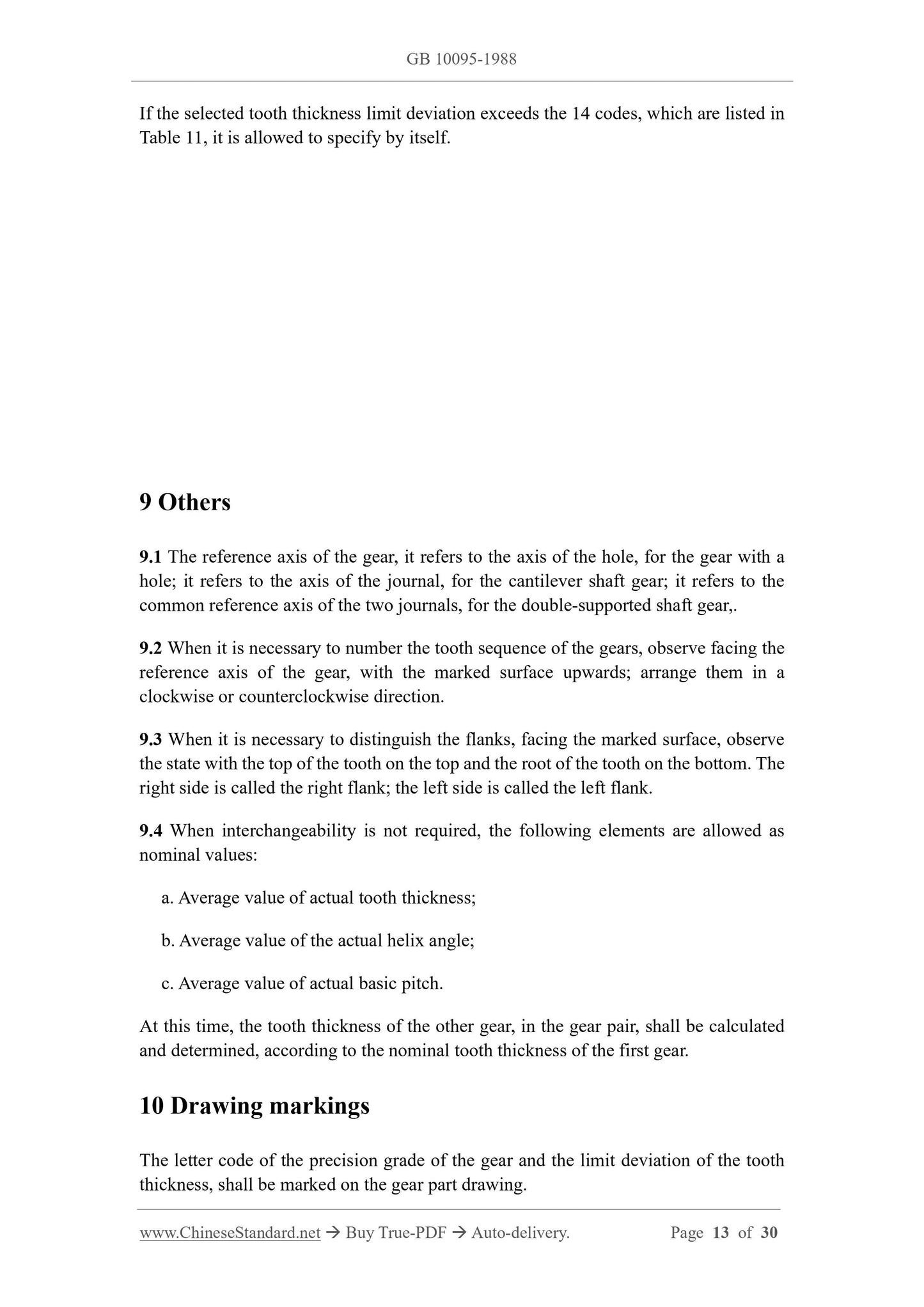1
/
of
7
PayPal, credit cards. Download editable-PDF and invoice in 1 second!
GB/T 10095-1988 English PDF (GB/T10095-1988)
GB/T 10095-1988 English PDF (GB/T10095-1988)
Regular price
$1,030.00
Regular price
Sale price
$1,030.00
Unit price
/
per
Shipping calculated at checkout.
Couldn't load pickup availability
GB/T 10095-1988: Accuracy of involute cylindrical gears
Delivery: 9 seconds. Download (and Email) true-PDF + Invoice.Get Quotation: Click GB/T 10095-1988 (Self-service in 1-minute)
Newer / historical versions: GB/T 10095-1988
Preview True-PDF
Scope
This standard specifies the error definition, code, accuracy grade, tooth blankrequirements, inspection and tolerance, backlash and drawing marking of involute
cylindrical gears and their gear pairs.
This standard applies to involute cylindrical gears and their gear pairs, for parallel shaft
transmission. Its normal modulus is greater than or equal to 1 mm; the basic tooth
profile is in accordance with GB 1356.
When the gear specification exceeds the range listed in this standard (the normal
module is greater than 40 mm, the diameter of the index circle is greater than 4000 mm,
the effective tooth width is greater than 630 mm), it can be specified in Appendix A
(supplementary).
Basic Data
| Standard ID | GB/T 10095-1988 (GB/T10095-1988) |
| Description (Translated English) | Accuracy of involute cylindrical gears |
| Sector / Industry | National Standard (Recommended) |
| Classification of Chinese Standard | J17 |
| Word Count Estimation | 26,289 |
| Date of Issue | 12/10/1988 |
| Adopted Standard | ISO 1328-1976, MOD |
Share













